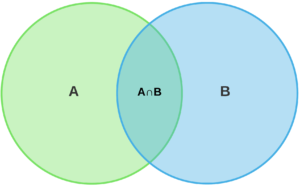This week you will be watching three TED talks and reading another article that all intersect with our big umbrella topic of organizational culture. (Think of this like a Venn diagram:

I think this can be a helpful analogy because it is much the same tactic that we take in research: we are not simply looking for the one “perfect” source but rather for a source that interacts with our ideas in someway that move them forward. And the more voices we hear from in that research (the more perspectives we incorporate), the more likely we will arrive at a fuller understanding of the topic we’re examining.
For this week’s discussion I would ask that each of you respond to question #1 and then either #2 or #3. Please categorize your list as “Discussions/ Homework” and tag it with “week of 6/8,” “unit 1,” and [your name].
- We use the term “rhetoric” to discuss how we make arguments (what we do and how and why, not just what we say). Since a hefty portion of your work in this upcoming Expanding the Canon blog post hinges on rhetorical analysis, let’s do some practice–working with one of the TED talks for this week (Heffernan’s, Fried, or Salecl), talk to us about what you find interesting in their rhetorical approach. How do they engage the audience? What kinds of strategies do they use to explain their ideas? What do you think is interesting or significant about the way that they present their arguments and appeal to their listeners?
- Choose one of the talks that you watched this week and examine how this speaker works with evidence. What kind of evidence do they use? How do they explicate the connections between their evidence and their claims? Be specific. How do they walk the audience through their argument? What are some of their argumentation tactics that you find effective? Note that you will need to watch the talk at least a second time, and take notes while you are doing it; you can also access a full transcript of the talk on the TED website.
- Choose one of the talks, and discuss how this presenter adds to our body of knowledge around organizational culture. Who is the speaker/author, and what kind perspective do they contribute? (You may need to do a quick Google search to get a sense of who they are.) What kind of connections do you see between this take and other things we have been learning about organizational culture? If you were to make a Venn diagram (or a few) articulating the connections between this text and other ones that we’ve read, what would it look like? You can have some fun with this using an online Venn creator like this one or by sketching it out by hand and incorporating the image(s) into your post):
Please post your responses by the end of the day on Wednesday, 6/10, and respond to at least 2 of your classmates’ posts by the end of the day on Saturday, 6/13.
